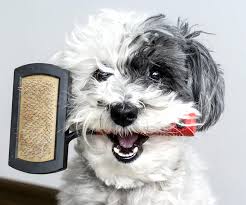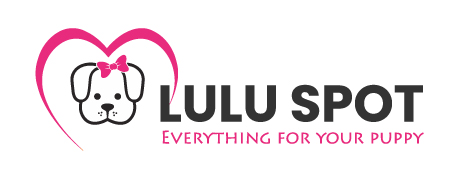Brushing your dog might seem simple, but it’s one of the most important parts of maintaining a healthy, shiny coat and comfortable skin. Beyond just keeping fur neat, regular brushing helps reduce shedding, prevents matting, and distributes natural oils that keep your dog’s coat glossy.
In this guide, we’ll walk through the right way to brush your dog’s coat, depending on coat type, along with tips to make grooming easier and more enjoyable for both you and your furry friend.

Why Brushing Matters for Dogs
- Prevents Matting – Tangles and mats can cause discomfort, pull on the skin, and even lead to infections.
- Reduces Shedding – Regular brushing removes loose fur before it ends up on your clothes and furniture.
- Improves Skin Health – Brushing distributes natural oils across the coat, keeping skin moisturized.
- Early Detection – Grooming gives you the chance to check for lumps, bumps, ticks, or skin irritation.
- Bonding Time – Grooming is a relaxing activity that strengthens the bond between you and your pet.
Choosing the Right Brush for Your Dog
Not all coats are the same, and neither are grooming tools. Using the right brush makes the process more effective and comfortable.
- Short-haired breeds (Beagles, Boxers, Pugs): Use a bristle brush to remove loose hairs and boost shine.
- Medium-haired breeds (Golden Retrievers, Border Collies): A slicker brush helps prevent tangles and removes undercoat hair.
- Long-haired breeds (Shih Tzus, Afghan Hounds): A pin brush or comb keeps long fur smooth and prevents knots.
- Double-coated breeds (Huskies, German Shepherds): An undercoat rake helps manage heavy shedding.
Explore quality grooming tools at Lulu Spot’s Brushes & Combs Collection to find the right match for your dog’s coat type.
Step-by-Step Guide to Brushing Your Dog’s Coat
1. Pick the Right Time & Place
Choose a calm environment where your dog feels safe. Many dogs enjoy brushing after exercise or play, when they’re relaxed.
2. Start Slowly
Let your dog sniff the brush first. Begin with gentle strokes in areas they like to be petted, such as the back or sides.
3. Brush in the Direction of Hair Growth
Always brush along the natural direction of your dog’s fur. This avoids pulling and makes the experience more comfortable.
4. Work in Sections
Divide the coat into sections to ensure you don’t miss any areas. Pay special attention to behind the ears, under the legs, and the tail area, as these spots are prone to matting.
5. Be Gentle with Tangles
If you come across knots, don’t pull. Use a detangling comb or gently work through the knot with short strokes. For severe mats, it’s safer to seek professional grooming help.
6. Finish with Praise
End each session with treats or affection so your dog associates brushing with positive experiences.
How Often Should You Brush Your Dog?
- Short-haired dogs: 1–2 times per week
- Medium-haired dogs: Every other day
- Long-haired dogs: Daily brushing to prevent tangles and mats
- Heavy shedders: Daily during shedding seasons (spring and fall)
Consistency is key making brushing part of your dog’s routine keeps their coat looking and feeling its best.
Tips for Stress-Free Grooming
- Keep sessions short and positive, especially for puppies or anxious dogs.
- Use a brush designed for comfort to avoid scratching sensitive skin.
- Combine brushing with regular baths and nail care for complete hygiene.
- Always check for fleas, ticks, or skin issues during grooming sessions.
Shop pet-friendly brushes and combs designed for every coat type at Lulu Spot.
Final Thought
Brushing your dog isn’t just about appearance—it’s a vital part of their health and well-being. With the right tools and a gentle approach, grooming becomes a stress-free activity that keeps your dog’s coat shiny, their skin healthy, and your bond stronger.
Ready to make grooming easier? Discover the full range of Brushes & Combs at Lulu Spot to keep your dog looking and feeling their best.
